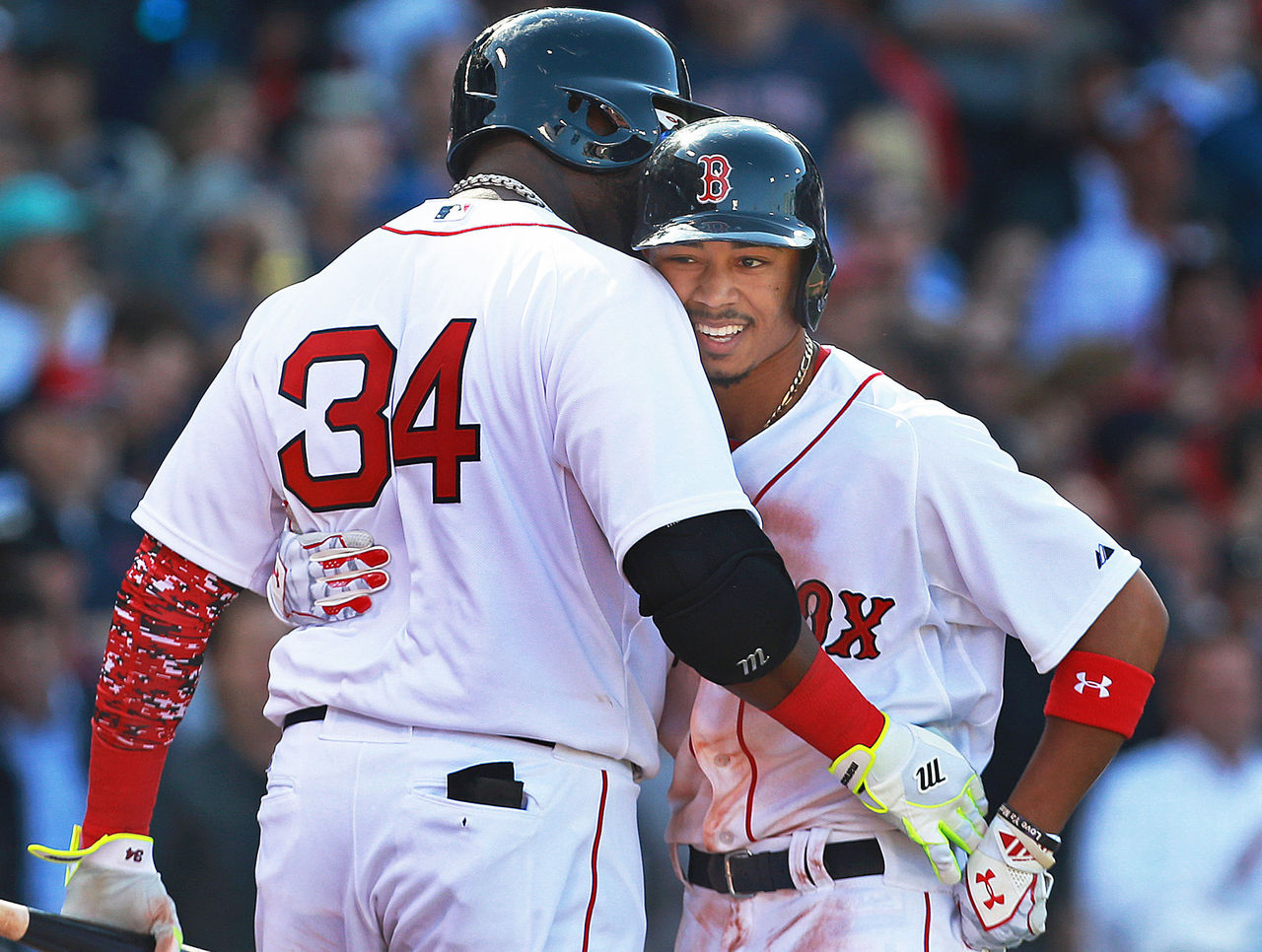Is Stacking an Effective Strategy in Season-Long Fantasy Baseball?
Stacking in daily fantasy is a common strategy used across most team sports. It's especially effective in daily fantasy baseball tournaments; if you draft four hitters in a lineup against a weak pitcher, it can pay dividends.
In order for the cleanup hitter to get multiple RBIs, the hitters in front of him must get on base. If the one and two hitters in the lineup plan on scoring runs, the three and four hitters better be there to drive them in. It's your basic go-big or go-home strategy, and it's proven to be successful.
Stacking in season-long fantasy, however, is quite rare.

How can stacking be beneficial?
If you're able to draft three, four or five of the top hitters from a high run-producing lineup, stacking can be extremely beneficial. Take Toronto for example. The Blue Jays led the league in runs last season by more than 100.
Having three or four of their top hitters can win you multiple categories in weeks where the team's offense is on a roll. If you have four of their best offensive players, the chances of them all being cold at one time is very slim, especially if they're of the caliber of hitters that Toronto has. This leads to more consistent production from your fantasy team.

Which teams are legitimate stack options?
As the undisputed best offense in baseball, Toronto is the ideal team to stack. It's possible that three elite Blue Jays can be had with the right draft picks and a bit of luck in 12-team leagues. In 10-team leagues, there's a chance four could fall to you.
| Team | Name | POS | ADP |
|---|---|---|---|
| TOR | Josh Donaldson | 3B | 4 |
| TOR | Jose Bautista | OF | 15 |
| TOR | Edwin Encarnacion | 1B | 18 |
| TOR | Troy Tulowitzki | SS | 55 |
Perhaps the safest stack option is the Colorado Rockies - not because they have the best lineup in baseball, but because of its stadium. Denver's high altitude makes Coors Field a hitter's paradise; it's had an average Park Factor of 1.416 since 2010 - by far the highest of any other stadium.
| Team | Name | POS | ADP |
|---|---|---|---|
| COL | Nolan Arenado | 3B | 6 |
| COL | Charlie Blackmon | OF | 14 |
| COL | Carlos Gonzalez | OF | 25 |
| COL | DJ LeMahieu | 2B | 74 |
| COL | Gerardo Parra | OF | 80 |
Other legitimate stack options include players from the Detroit Tigers, Boston Red Sox, Texas Rangers and Chicago Cubs.
The New York Yankees may tempt some fantasy owners, but Alex Rodriguez, Mark Teixeira, Brian McCann and Jacoby Ellsbury provide too much injury risk to consider. Putting all your eggs in the Yankees basket could make for a catastrophic fantasy season.

Should you go out of your way to build a stack?
Absolutely not.
Going out of your way and reaching on players in an attempt to complete a stack is the type of stuff that will put a team in the basement of your league's standings. It's okay to draft someone a few spots ahead of their ADP if you think they're undervalued, but not for the sake of finishing off a stack.
Only go for the stack if the right players start to fall your way. Never go into a draft with the plan to stack the Blue Jays, or the Tigers or the Rockies.

How can stacking go wrong?
As previously mentioned with the Yankees, injuries can completely derail a stack. Even if it's just one of the four hitters that goes down for a significant period of time, it can affect the entire lineup.
If, for example, Colorado lost Blackmon, it would affect the amount of RBI chances his teammates have. Arenado is Colorado's cleanup hitter, and his presence alone affects the way pitchers approach the No. 3 hitter, Gonzalez. If Arenado sustained a long-term injury, Gonzalez would see fewer pitches to hit.

How can it affect the rest of your lineup?
Stacking can also impact the ability to strategically draft certain positions. Most middle of the order bats consist of outfielders or first basemen. If you pursue a Detroit stack, for example, you could find yourself favoring positions of depth - and winding up short at positions of scarcity.
Drafting 1B Miguel Cabrera, OF J.D. Martinez and OF Justin Upton could leave you in a hole when trying to fill C, 2B and SS later in the draft - positions with little offensive depth. At least two of these positions should be filled much earlier in order to produce a balanced lineup.

Do the pros of stacking outweigh the cons?
While having an elite stack like the Blue Jays could lead to streaks of insane offensive numbers for your fantasy team, it comes with plenty of risk. Injuries, down seasons and streaky play (on the wrong end) are just three of the many risks. To elaborate, your stacked team of choice could be on a cold streak when fantasy play matters most: the end of the season (AKA the fantasy playoffs).
If your stacked team is out of the playoff race and its players are banged up, they could see plenty of rest or be shut down in favor younger players down the stretch.
Overall, you're better off drafting your team using more conventional methods.